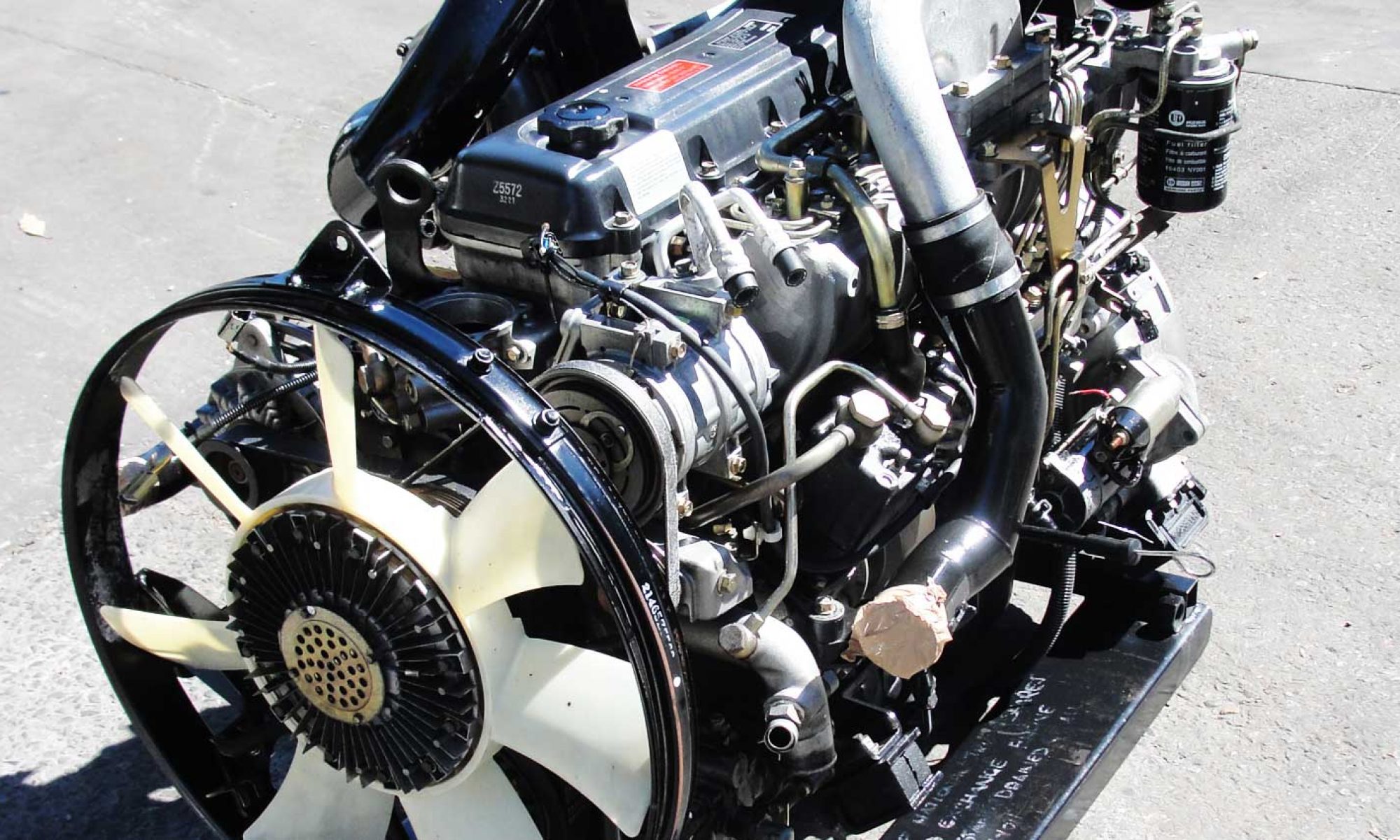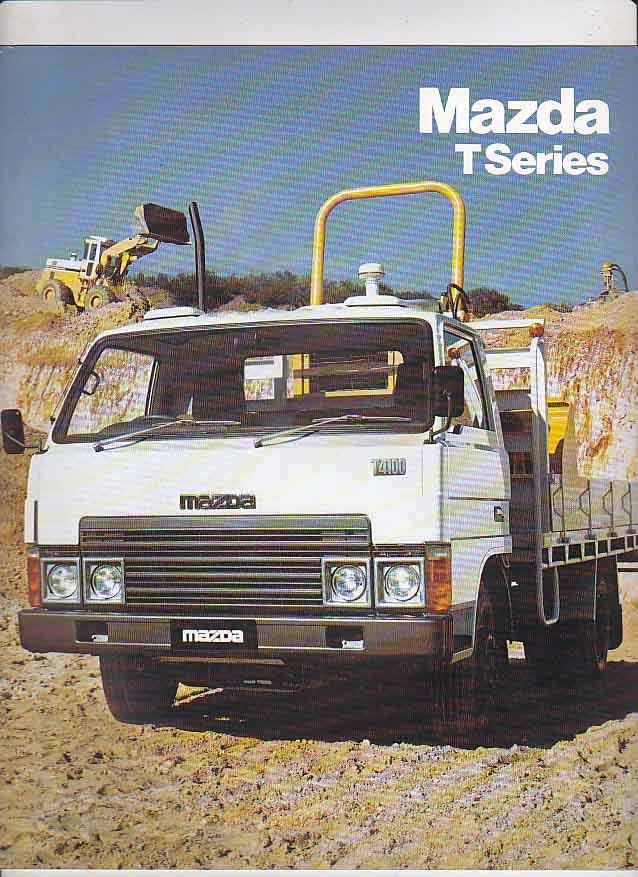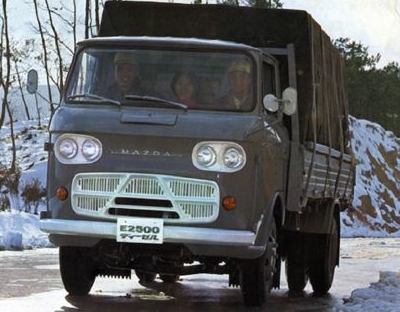Mazda Diesel Truck Engines – Australia
Mazda Diesel Truck Engines Used in Australia
History of Mazda Trucks in Australia
History of Mazda Trucks in Australia
Mazda entered the truck market in Australia in the mid 1960’s with the E2500 diesel and E2000 petrol trucks. Small numbers of these trucks were sold, and it was until the release of the next generation the E2500 and E2000 which was released in 1972 that any significant numbers of Mazda trucks were sold.
The E2500 was powered by the XA 2500cc diesel engine and the E2000 by the 2000cc petrol VA engine.
A 3.5 – 4-ton truck, the E3800 came out in 1972. This was substantially bigger truck recognizable by the small windows on either side of the front panel.
In 1974 the E2500 truck was released with a bigger motor, the XB of 2700cc, and was renamed the E2700. At this time the E3800 was upgraded with a 4100cc engine and renamed the E4100
The E2700 cabin was upgraded in 1977 with a new front panel, grille and larger blinkers.
The first Mazda buses were imported in the early 1970’s. The Parkway bus was fitted with the 2700cc XB engine.
In 1979 the E2700’s engine was again upgraded, this time to the HA diesel of 3000cc. The truck was renamed the E3000. The Parkway bus was also upgraded to the HA 3000cc engine.
A new 4-ton truck the T4100 with an upgraded 4100cc engine and a new tilting cab was released in 1981.
The T3000 truck, a new generation with a new cabin, a tilting cab similar to the T4100, was released in 1981. This truck used an upgraded version of the HA 3000cc diesel engine. A new petrol version fitted with the VA 2000cc engine also came out in 1981 but only ran until mid-1982 when it was discontinued. The 3500cc SL engine was fitted from 1984 and the T3000 was renamed the T3500.
A new generation bus, the T3000 Bus was released in 1982. The font panel had a similar design to the T series trucks. It was upgraded to a 3500cc engine in 1984 and was renamed the T3500 Bus.
The T2600 truck with a 2600cc 4G54 petrol engine came out in 1985 and was discontinued in 1988.
The Mazda T3500 Bus was discontinued in 1997.
In 1987 a new generation T series was released. The T3500 was fitted with the 3500cc SL engine and a new model, the T4000, fitted with the 4000cc TF engine came out in 1992. From 1987 to 1992 a turbo version with the 3500cc SL turbo intercooled engine was also available although it was sold in limited numbers.
The T4100 was discontinued in1989,
A new model in the T series, the T4600 came out in 1992. powered by the 4600cc TM diesel engine it was sold alongside the T4000 and T3500.
The new generation of T4600 was released in 2001 with a completely new cabin. This truck was discontinued in early 2003 ending Mazda truck sales in Australia.
Mazda Motor Corp. History
Mazda Motor Corp. History – Global
Mazda Motor Corporation began as the Toyo Cork Kogyo in 1920. The company was renamed Toyo Kogyo Ltd. in 1927. Toyo Kogyo’s start in motor vehicle manufacturer was in 1931 when the company, which had been in the production of machine tools, introduced a three-wheel truck, the Mazda Go. This vehicle was based on a motorcycle.
During the Second World War Toyo Kogyo was involved in the production of weapons for the Japanese military, predominantly rifles.
From 1950 Mazda produced a series of three-wheel vehicles and introduced four-wheel mini trucks, the Romper, in 1958 and the D1000 and D1500 from 1959. The B1500, a bonneted pickup, came out in 1961, the D2000 in 1962, and the E2000, a forward control light truck, in 1964. A light bus, the A series was introduced in 1966, this bus developed into the Parkway.
Production of cars started in 1966 with the Luce and the Familia in 1967. Mazda also started production of rotary engine cars with the Cosmo sports car in 1967.
Larger truck production started in 1968 with the Boxer truck (export version the E3800). The Titan series (export version the E series and later T series) was introduced in 1971.
Early export markets, from the 1960’s, included: Australia, Canada, USA and New Zealand.
Mazda began a relationship with Ford Motor Co in 1974. Ford had acquired a stake of 24.5% and by 1995 a controlling interest of 33.4%. During this period Ford and Mazda shared parts, platforms, re-badged vehicles and production facilities. Ford began selling down its stake in 2008 and by 2015 had virtually cut all ties.
Mazda has many manufacturing plants around the world including: Columbia, USA, Thailand, Vietnam, Malaysia, Russia, China and Mexico. Overseas assembly plants include: Iran, Indonesia, Kenya and South Africa.
All Mazda’s vehicles from 1935 have been named “Mazda” but the company name was not changed from Toyo Kogyo Ltd. to Mazda Motor Corp. until 1984. This name is a play on the similar sounding surname of the founder Jujiro Matsuda and Ahura Mazda the lord of wisdom in the ancient Iranian religion of Zoroastrianism .



